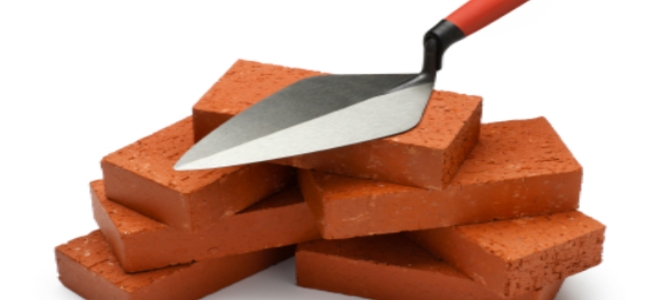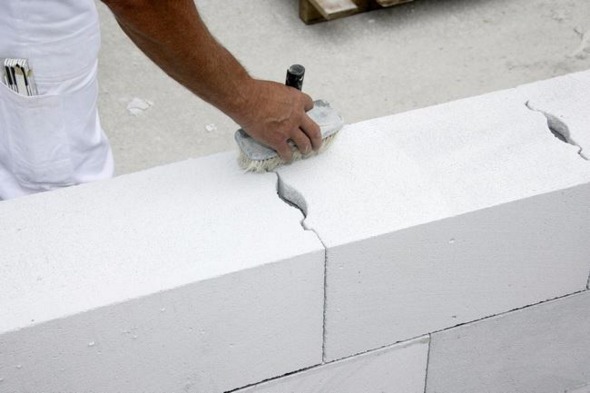At the moment, two types of bricks are used in construction. It is silicate and ceramic. As a raw material for the first, lime, quartz sand and water are used. Such a brick has long been known to mankind and is distinguished by good sound insulation. Compared to ceramic, silicate has a higher density, but you need to understand that such a material has a number of drawbacks, so it is not used for the construction of furnaces and foundations. Ceramic is made from ordinary clay. It is burned in a drying chamber. However, the firing technology may be different. It is from this characteristic that the properties of this brick will depend. Ceramic material can be ordinary and facial.

Thus, both types of bricks can have good characteristics. But recently, aerated concrete has become in great demand. It also has a number of advantages. Therefore, the question of which is better - brick or aerated concrete for the construction of a residential building is always relevant. Well, let's compare these two materials in detail.
Features of aerated concrete
What it is? Aerated concrete is a type of cellular concrete. This is an artificial material with uniformly mixed air pores. The gas block consists of aluminum powder, quartz sand, cement, lime and water. Sometimes waste is added to the composition - ash and slag. This reduces the cost of production, but it also negatively affects the quality of the building material.

The manufacturing technology of this material is quite simple. The composition is mixed with water and poured into a mold. In this case, aluminum powder reacts with lime. As a result, the mixture rises, and after that takes on a solid form. This mass is cut into blocks, which are then processed under pressure in an autoclave. Aerated concrete first appeared 85 years ago. Due to the porous structure, this material is characterized by thermal insulation properties. By its physical properties aerated concrete resembles a tree. It is a warm, breathable and environmentally friendly material. It is easy to saw and drill. At the same time, the material is fire resistant and not prone to decay.
Thus, the gas block is a strong building material, which allows you to build various buildings. Wall thickness and thermal conductivity can be different. But from the gas block it is not recommended to erect buildings above three floors.
Weight
On average, a gas block weighs 22 kilograms, while its dimensions are much larger than any brick. So, a brick of similar volume will weigh 64 kilograms. At the same time, cellular aerated concrete perfectly absorbs sound, so there is no need for additional sound insulation.
Comparative specifications
To understand what is better - brick or aerated concrete, compare their technical characteristics:
- Tensile strength. For brick, this parameter is from 110 to 120 kilograms per square centimeter. The gas block is less durable. This parameter does not exceed 50 kilograms per square centimeter.
- Weight. The mass of one cubic meter of brick is from 1.2 to 2 tons. The gas block will weigh from 200 to 900 kilograms.
- Thermal conductivity. For masonry from gas blocks, this parameter is 0.09-0.12 W / micron. For bricks - 0.46 W / mk.
- Frost resistance. For a gas block - 50 cycles, for a brick - from 75 to 100.
- Water absorption. For aerated concrete, water absorption is 20 percent by weight, for brick - not more than 12. This means that the first material needs additional protection. But we will talk about this a little later.
- Fire resistance. Here is a description of the classes. Both correspond to the first class. What does this mean, consider a little later.
- The size. The gas block has the following dimensions: 20x30x60 centimeters. Brick - 6.5x12x25 centimeters.
- Number. There are 28 gas-block units or 380 bricks per one cubic meter.
Which is better - brick or aerated concrete for the construction of a residential building? Knowing these characteristics, everyone can accurately determine whether a particular material is suitable for building a house. But in order to better understand the answer to the question, then we will make a detailed comparison of aerated concrete and brick by characteristics.
Compressive strength
Why is this option so important? The strength of the box at home will directly depend on this parameter. The more floors it has, the heavier the floors will be. Thus, the coefficient of strength should be high.
Example
For example, we need to build a two-story country house with a basement. The height of each house is 2.5 meters. At the same time, the floors between the floors are made of reinforced concrete slabs. In this case, the bearing walls must be made of brick, as this material can withstand heavy loads. But aerated concrete will not withstand such loads. After the construction of such a house will open at the seams (cracks are provided). It is also not recommended to make a foundation of aerated concrete. However, in this case, non-bearing walls made of aerated concrete can be erected. This will be a fairly economical solution and not at the expense of reliability.
Coefficient of thermal conductivity
This parameter is no less important. The thermal conductivity coefficient will determine the ability of a wall to pass heat through itself. The higher this parameter, the better the properties. Earlier we gave comparative characteristics. Which is better - brick or aerated concrete? In this case, aerated concrete leads unambiguously. The thermal conductivity index is four times higher than that of a brick. That is why, according to the requirements, it is necessary to erect brick walls with a thickness of at least one meter. A thickness of 50 centimeters is sufficient for a gas block. Reviews say that the cost of building a house of brick will be higher, since in addition you will have to solve the issue of thermal insulation. If you use a gas block for the walls, you do not need to perform additional thermal insulation. The thermal conductivity coefficient of such walls is minimal. Inside such a house, warm air will linger for as long as possible. And with brick walls, the house "gets cold" very quickly.

Water absorption coefficient
How is this parameter determined? It is determined by the ability of a building material to absorb water and retain it within itself. Due to water absorption, material properties are deteriorating. First of all, this design becomes less durable. Which is better - brick or aerated concrete? In this case, the brick wins. The gas block absorbs one and a half times more moisture. Therefore, walls of aerated concrete need additional waterproofing. It is imperative to clad the facade of the house. Usually, plaster is used for this. As for the brick house, it does not need additional cladding. Although today very often some kind of cladding is used for such walls. This is siding or the same plaster.
Fire resistance
This is the ability of a material to resist high temperatures. In other words, this coefficient shows how long the structure will collapse in a fire. According to the technical requirements, both materials here correspond to the first class. What does this mean? First class materials have a margin of time for fighting fire of at least 2.5 hours.
How much does an aerated concrete block and brick cost?
This question interests many. How much does an aerated concrete block cost? The price of one cubic meter is about 4 thousand rubles. Yellow brick will cost about 7 thousand rubles per cubic meter. The number of blocks and bricks per cube will be different. The speed of the work is also different. To build a house using yellow brick for a long time. According to reviews, a good brick should correspond to a class not lower than M200. And he is dear. In addition to the price of the material itself, the cost of installation work must be taken into account. The cost of building a house of brick will definitely be higher. This is even though such a house will not be faced with stucco. It must also be said that the soundproofing properties of aerated concrete are higher.
To summarize
In fact, the brick is 13 times smaller than the gas block, and weighs four times more. The weight of masonry made of aerated concrete is 400 kilograms, and of brick - 1800. In practice, this means that it will take at least twice as much time to lay the bricks. The cost of a house from aerated concrete will be lower. But still, what is better to choose? Let's make a brief summary of the above:
- A high-quality gas block will always be cheaper than a high-quality brick. In addition, it is difficult to find good bricks today. Many are trying to save on production. The cost of a house made of aerated concrete will be lower.
- Ceramic brick as a building material has been used for more than five centuries. How such houses behave, many know. They are really strong. But how the building from the gas block, which appeared relatively recently, will behave, is a big question.
- By technical characteristics, the gas block is superior to brick. No need to make a thick wall and perform thermal insulation. But since the material is able to absorb moisture, it is impossible to do without waterproofing of aerated concrete. Therefore, exterior decoration is a must. A brick wall can stand “bare” for quite a few years.
- Brick has a high bearing capacity. Therefore, the bearing walls are always made of it.

As you can see, there are several differences in these materials. It is not possible to say unequivocally that it is better - a gas block or a brick. Both have their positive and negative qualities. But still, many prefer to use a gas block. Some have formed a strong conviction in their minds that a solid house should be made of brick only. This is not true. If you need to build a structure in a short time and at the same time it must be reliable, you can do the following. For bearing walls, brick is used, and for all others, a gas block. This is the best option for building a private house. Although some do and the bearing walls of the gas block. Experts say that this can be done, but only if it is a one-story house with an attic.